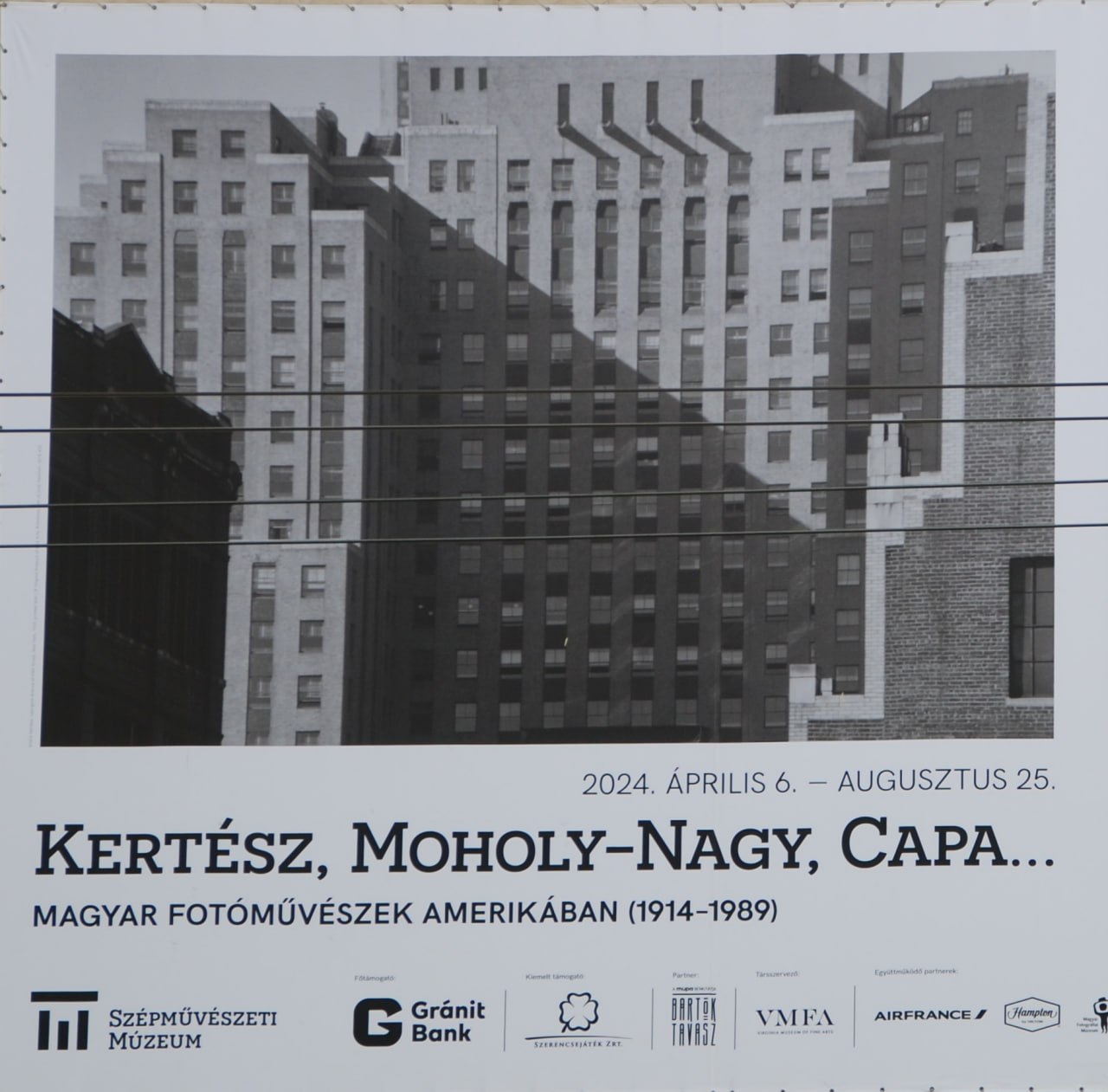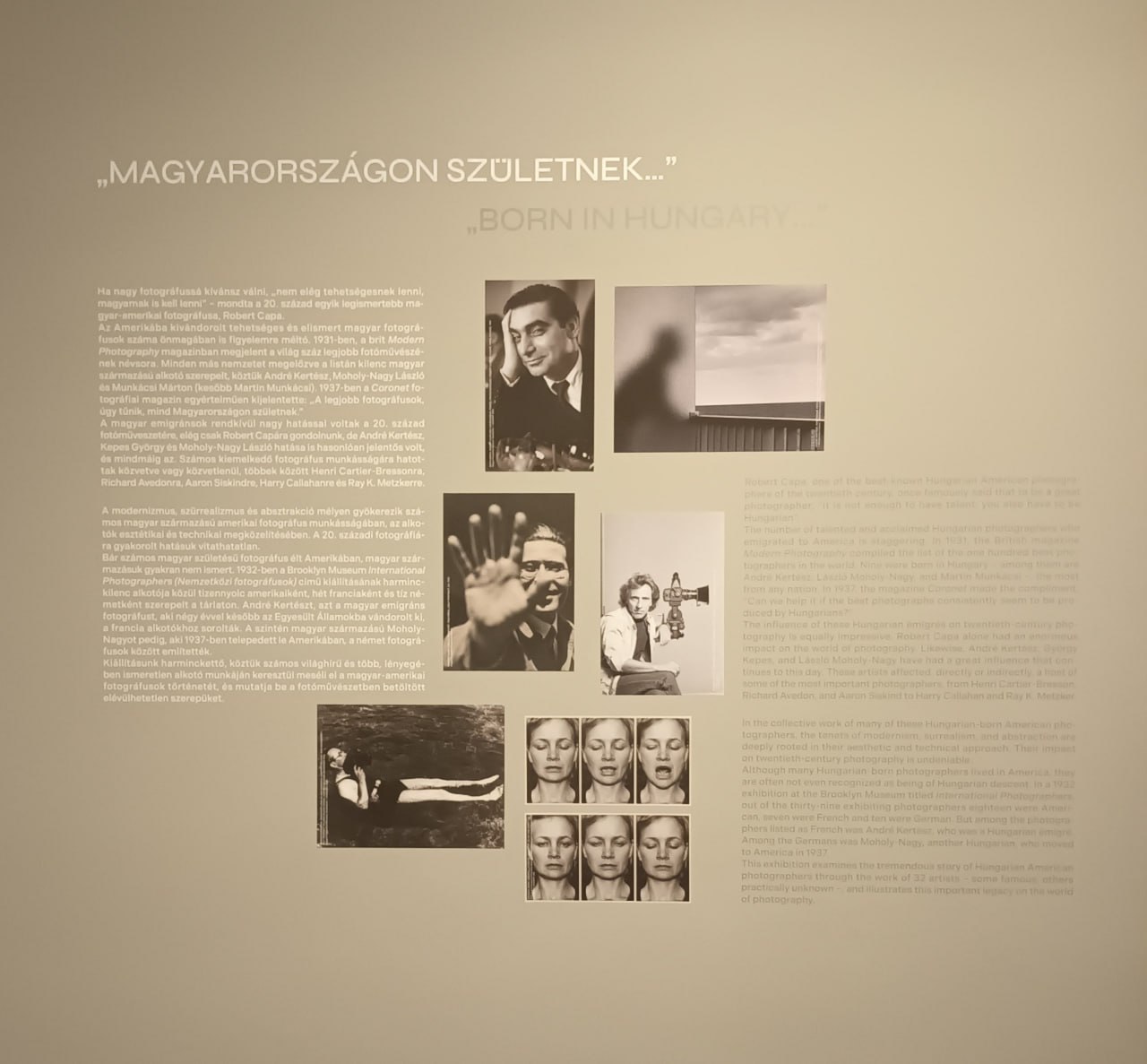Everybody remotely interested in the history of photography will immediately recognize the famous names featured in this exhibition – André Kertesz, László Moholy-Nagy, Robert Capa – and their contributions to art and photography: Bauhaus, abstraction, surrealism, photojournalism, street photography, war photography and so on. How the world appears in photography even today cannot be separated from the work of these photographers.

The exhibition, curated by Alex Nyerges and Peter Báki and co-curated by Károly Kincses, shows more than 170 photographs by 32 Hungarian émigré artists who settled in the United States of America during the 20th century. It is subdivided into eight thematic chapters exploring diverse aspects of these photographers’ work including street photography, photojournalism and even fashion and celebrity photography.
Visitors do not necessarily have to agree with one of the show’s main statements, namely, that there is some form of innate relationship between being a Hungarian and being a good photographer (Capa is quoted as saying that “It is not enough to have talent, you also have to be Hungarian”).

However, breaking with traditional, conservative forms of photographic representation in terms of pictorialism, these photographers created new photographic vocabularies which may, or may not, reflect that, as the exhibition puts it, they “are most definitely Hungarian by birth, by vision, and training in their native land.”
(Brassaï, the famous photographic chronicler of Paris, was also born in what was then Hungary. Because he moved to Paris in 1924 and stayed in France for the rest of his life, his work is not on display in this exhibition but it belongs to its context.)

For many photographers arriving in the United States without proper preparation and sufficient language skills, the camera served not only as a vehicle with which to document, or photographically construct, social reality but also as a means of communication, transcending language barriers and initiating conversations.
It is one of the most interesting aspects of the exhibition that it does not limit the featured photographers to the genres they are most often associated with. While, for example, some of Capa’s most famous pictures are on show here, some of his less famous images can also be seen, representing photographic genres that are not often connected with Capa.
For example, a picture taken in 1940 in Hot Springs, Arkansas, shows a four-man jug band: “The Memphis Jug Band was an American musical group that featured a mix of conventional and homemade instruments. They played country blues, humorous songs, and upbeat dance numbers with jazz flavours.”¹
This band seems to be an unlikely subject for a photographer considered by many as the world’s greatest war photographer. The exhibition, thus, invites visitors to discover aspects of Capa’s work that do not figure prominently in most photographic discourses.²

The work of the less familiar photographers – Sylvia Plachy (Plachy Szilvia), John Albok (Albók János), Arnold Eagle, György Lörinczy, György Kepes and others – is equally impressive, qualitatively convincing, and versatile as regards subject matter: street scenes during the depression showing the poor and the unemployed, the civil rights movement and even Plachy’s portrait of the delegates of the “40th Communist Party Congress” in East Berlin, 1989.
Not only Kertész, Moholy-Nagy and Capa had tremendous influence on the evolution of photography and photojournalism. For example, Martin Munkácsi’s innovative sports photographs and snapshot aesthetic were “to revolutionize photography forever. His ability to capture spontaneity with such an acute understanding of style, pattern, form and framing demonstrates his uniquely sophisticated visual sense and understanding of image making, which was to become so influential to so many subsequent photographers.”³
Seen in parallel with the exhibition Robert Capa: The Photojournalist at the Robert Capa Contemporary Photography Center in Budapest, this fabulous exhibition shows the ongoing relevance of both photography and Moholy-Nagy’s statement that “those with no knowledge of it will be the illiterates of the future.”

Kertész, Moholy-Nagy, Capa … Hungarian Photographers in America (1914 – 1989) is at the Museum of Fine Arts, Budapest (until 25 August 2024).
For some of the images and more information on the photographers, see: https://www.mfab.hu/exhibitions/kertesz-moholy-nagy-capa-hungarian-photographers-in-america-1914-1989/
¹ The Story behind the Photograph (4) Robert Capa, Four-man Jug Band, Hot Springs, Arkansas, 1940, at https://www.mfab.hu/tours/the-story-behind-the-photograph-uncovering-seven-portraits/
² See Frank Möller, Peace Photography (Houndmills: Palgrave Macmillan, 2019), pp. 89–103.
³ Martin Munkácsi, Hungarian, 1896–1963, at https://www.michaelhoppengallery.com/artists/119-martin-munkacsi/
Photographs taken for strictly informational and non-commercial purposes.
